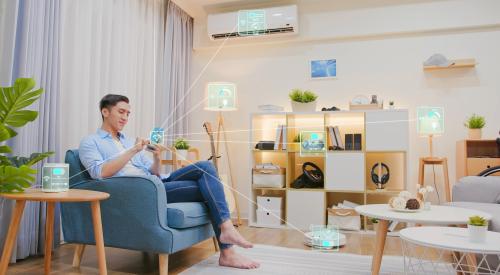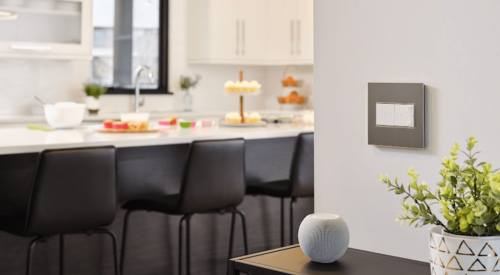Getting started is the toughest part of tackling something new—that certainly holds true when it comes to understanding wildly popular (and sometimes intimidating) smart home products. The competitive opportunity unlocked by smart homes is undeniable for builders—homebuyers crave it—many even expect it—and offering these products in your homes is good for business.
According to the Consumer Technology Association’s (CTA) 2018 State of the Builder Technology Market Survey, four in five builders say marketing home technologies is important, with more than one in three saying it is very important. But there’s a catch: getting started can be confusing—especially for someone new to the technology.
Tips for Getting Started With Home Technology
To help you unpack the complexity, here are five simple but important tips:
1. Prioritize technologies
Just because you can control something doesn’t mean you should. It’s easy to get sidetracked by all the novel ways you can connect a home. Instead, pick a few hard- hitting categories and anchor your connected home strategy there. The highest impact categories for homebuyers are the ones they use daily, especially heating and cooling, lighting, and security cameras. Start with one or all of these as your foundation, and add the others later.
2. Don’t underestimate the role of Wi-Fi
The most valuable (yet overlooked) player on the smart home team is the Wi-Fi network. Make sure you plan to offer a whole home Wi-Fi network that is capable of supporting the homebuyer’s connected home goals today and tomorrow. The last thing you want is to offer a connected home and have none of it work because a homebuyer’s existing Wi-Fi network can’t handle the load.
3. Play nicely with the “Big Three” voice control providers
There are so many connected home technologies on the market, it can be difficult to create your short list. One of the first questions you should ask of any connected home product is whether it is compatible with the biggest voice control providers: Amazon, Apple, and Google. This way, your homebuyer is covered no matter their brand preference.
4. Wireless products are your friend—especially when adding to an existing community
What if you want to build connected homes in an existing “un-connected” community? No problem, as long as you look for products that can be easily retrofitted without needing to run new wires (hint: choose wireless devices). This way, you can give your existing homebuyers a relatively simple path to a connected home.
5. Integrate smart home product benefits into your lifestyle campaigns
Today’s consumers use smart home products to solve common problems, so use those benefits to attract buyers. For example, smart lighting systems can be programmed to mimic activity when nobody’s home, giving the impression that someone is home. Smart cameras help you keep an eye on things from afar. These two benefits are perfect for jet-setting couples and busy families.
Ready to get started? Look for manufacturers that understand not only their product category but all the major categories in the smart home ecosystem. By looking for a “connected” partner, you can feel confident that the solution you choose will deliver the best overall connected home experience for your homebuyers today and tomorrow.













